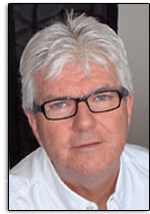They are the fabric of what Canada is in antiquity and who Canadians are today. But they face serious risks every day from the oilsands in Northern Alberta. Our aboriginal communities face foul air, tainted waters, and environmentally related cancers from the long-term effects of oilsands extraction on their traditional lands. It's criminal how imposed development takes place and how little say the people have in how said development takes place.
The most direct and long-term effects of digging up the land, withdrawing immense amounts of water from rivers, discharging air- and water-borne waste, and the impact of thousands of construction workers has been immense. They have arrived amid the furious pace of oilsands development and have fallen right in the laps of the aboriginal peoples and the remote outposts that are their ancestral homes.
The area around Fort McMurray, Alberta, the epicentre of the oilsands operations, has a population of some 6,400 First Nations residents comprising the Mikisew Cree, the Athabasca Chipewyan, the Fort McKay, the Fort McMurray No. 468, and the Chipewyan Prairie Dene. There are also seven Métis locals which represent approximately 5,000 to 6,000 residents. Twenty-six other First Nations groups in the Athabasca, Cold Lake, and Peace River have reported negative effects caused by the oilsands.
In the Cold Lake area, some 250 kilometres southeast of Fort McMurray, the Beaver Lake Cree have launched a constitutional challenge against the Federal Conservatives and Alberta government claiming their rights have been trampled in favour of rapid resource development. They also claim the Alberta Energy Regulator (AER) has refused them standing as intervenors and ignored the harm to wildlife, water resources, and the natural condition of the land caused by the proliferation of oilsands projects in the area.1
If their challenge makes it through the courts, it will seriously curtail oilsands development.
Another fly in the ointment is the fact that more pipelines are needed to get the heavy bitumen to market. If they go ahead, it will adversely affect First Nations in other provinces. Paradoxically, the other' First Nations could end up bearing the burden of oilsands development but none of the benefits.
First Nations negotiators are often overwhelmed by the developers' complex, technical plans and the knowledge their projects will always be approved by the federal and provincial regulators. Because funding for First Nations' agencies is actually provided by the oilsands project proponents, the pressure to accept their conditions is extraordinarily high.
A major problem for the communities occurs when toxins are dumped or leech into the river system of Athabasca. First Nations that live at or near Fort Chipewyan approximately 120 kilometres downstream of the oilsands at Lake Athabasca used to rely heavily on the water for their survival. With the pace and magnitude of oilsands development and the worries about toxic elements going into the river, nobody in Fort Chipewyan eats fish from the lake anymore. In Fort McKay, a Cree First Nation some 60 kilometres north of Fort McMurray and on the banks of the Athabasca River, bottled water had to be brought in for more than two years after the water treatment plant proved to be ineffective at removing some cancer-causing agents from river water.
Doctors at the Fort McKay health clinic are documenting skin rashes on patients after they have showered. Mothers are advised to wash their children with bottled water. "Even if there is not an acute danger from the water people use for bathing, washing, and cooking, what about long-term exposure," says Dr. John O'Connor a practising physician at the clinic. "Nobody seems to know what that might be."2
In fact, when Dr. O'Connor raised the red flag over his studies into the abnormally high incidence of a rare bile duct cancer, Health Canada and the Alberta College of Physicians muzzled him claiming he was sounding too many alarm bells. He was eventually cleared of all complaints. Government reports about cancer rates in the area have proven inconclusive and no government studies have actually looked at how the cancers might have been caused.
O'Connor relates a case study of a 47-year-old woman who died of bile duct cancer only four months after being diagnosed. She lived in Fort McMurray and had worked in the open pit mines and tailings ponds for more than 20 years. Reports indicate she was a healthy, active woman - a non-smoker and occasional drinker who thrived on her work. There was no apparent cause of the cancer other than working in oilsands extraction facilities. During the six months after the woman's death, six people in Fort Chipewyan (population 1,100), that lies approximately 220 kilometres north of Fort McMurray, received a cancer diagnosis including another bile duct cancer. A few months ago, a 58-year-old woman from the same area died of the same cancer. She was the seventh person from the small community stricken by the rare disease.
First Nation residents claim that if Fort McMurray was downstream from the oilsands projects there would be an absolute uproar over the quality of the water.
If you stand on the riverbank in Fort McKay and look south to the horizon, you can see huge emission stacks belching murky clouds. There is a sour smell of sulphur in the air. Some formerly white older houses on the reserve have a pale yellowy covering. Inside the houses a fine dust settles on everything day after day. Sometimes the smell is so strong, residents stay indoors. The band has installed its own air monitoring system, but the community doesn't get enough information from agencies and the industry about what is in the air and what constitutes danger.3
Because the industry and the AER won't give all the information to the monitor the problem gets compounded and regular inhabitants get left in the dark as to how to manage their living style including outdoor activities. No one knows how serious the emissions are or even if there has been a dangerous incident on the oilsands site that they were never informed about. The Mikisew Cree First Nation band had made similar inquiries about the possible dangers six months ago only to be stonewalled by the AER, Alberta Health Services, and Alberta Environment. None of the agencies provided adequate information or any type of strategy in order to deal with problems.
According to Alvaro Pinto, who heads the reserve's environmental sustainability department, "Somebody has to tell us we have a problem so we can take action to protect the 700 people including elders and babies who live here." He goes on to say, "Who is responsible to tell us to evacuate? Is it Alberta Health Services, the chief medical officer for the region? It shouldn't be on us to figure it out. I warned them that someone will go to jail if there is a serious incident."4
1 Steward, Gillian. "Bearing the Risks" Toronto Star (August 30, 2015): IN1
2 Ibid IN4
3 Ibid IN4
4 Ibid IN4















